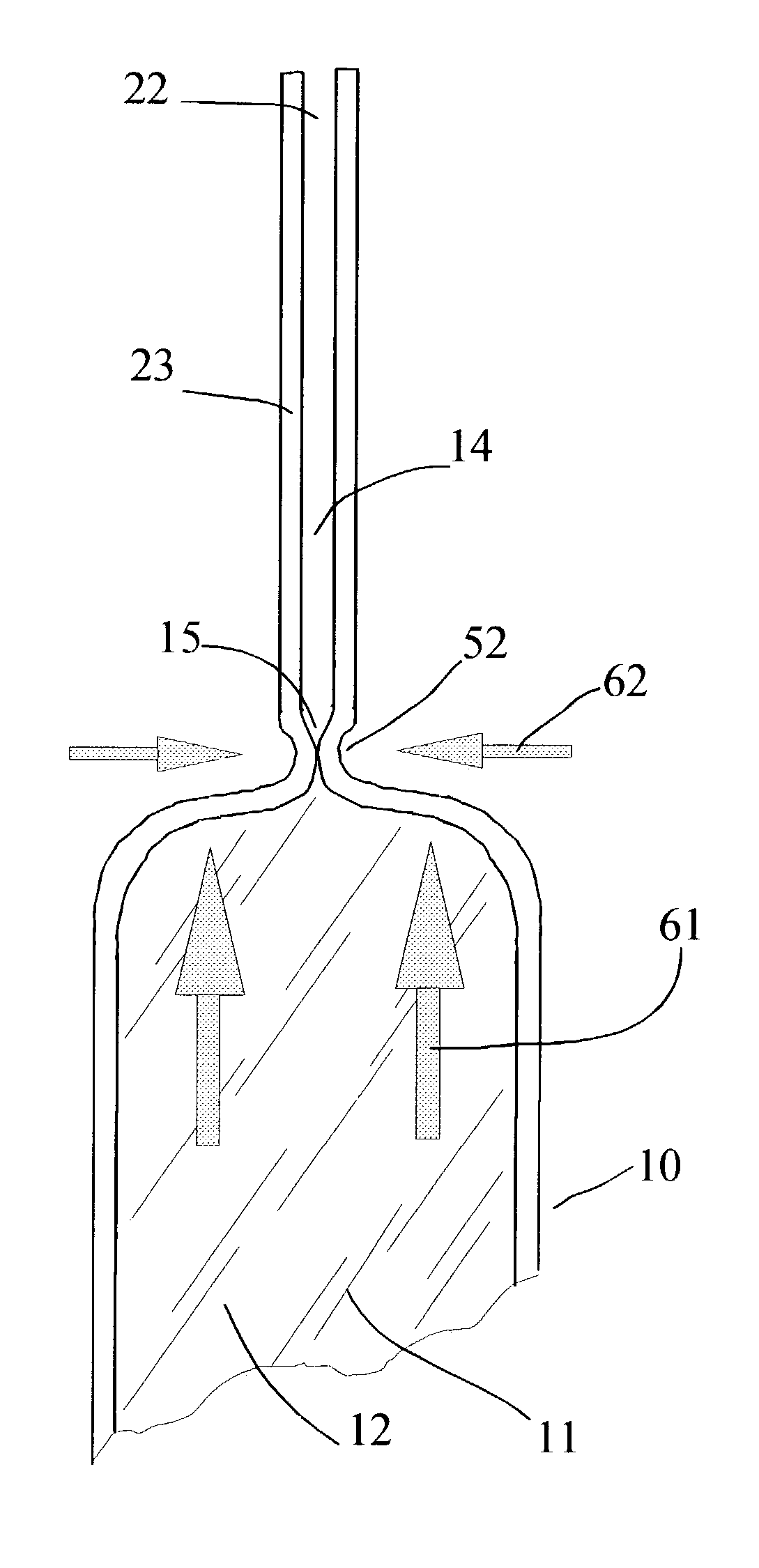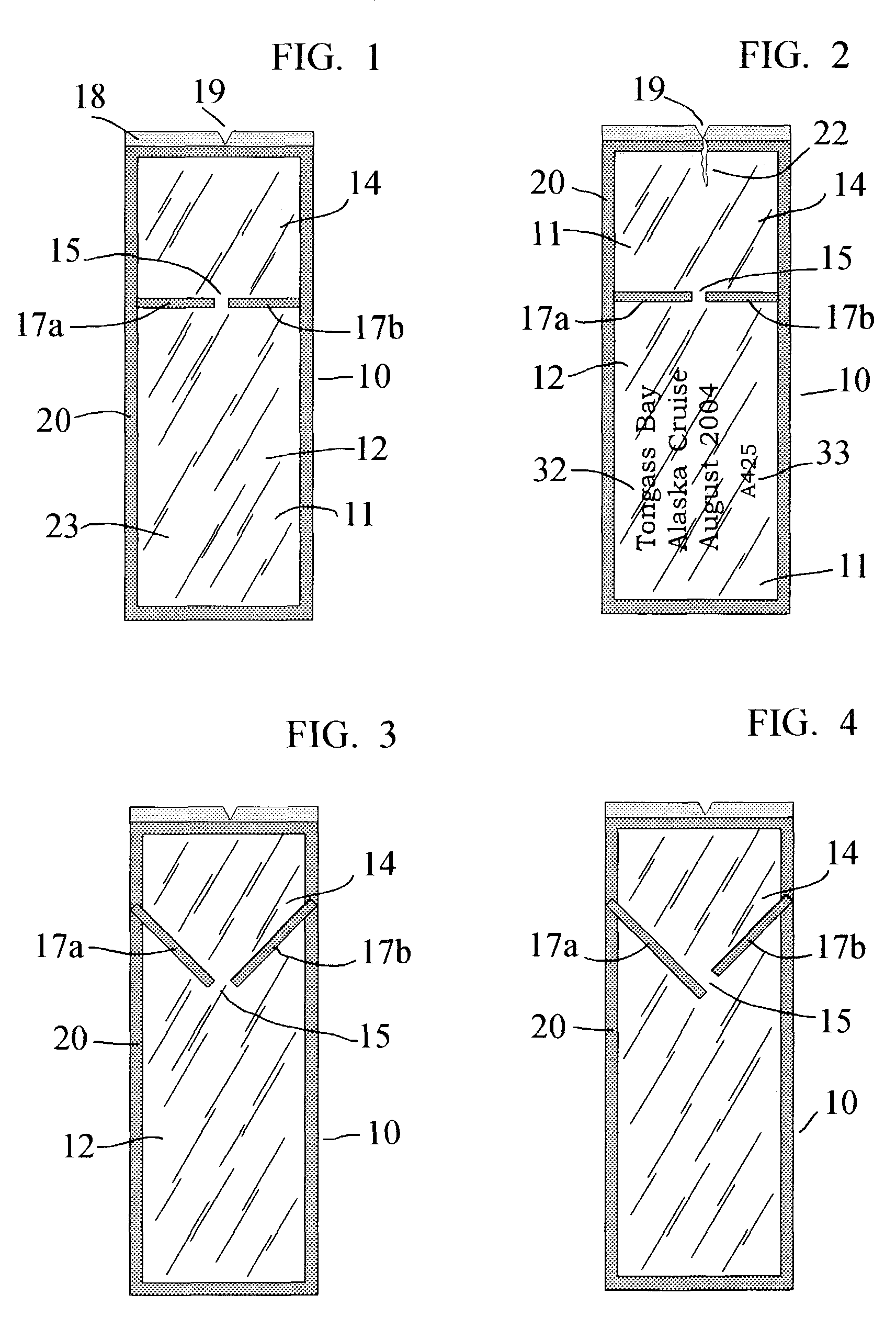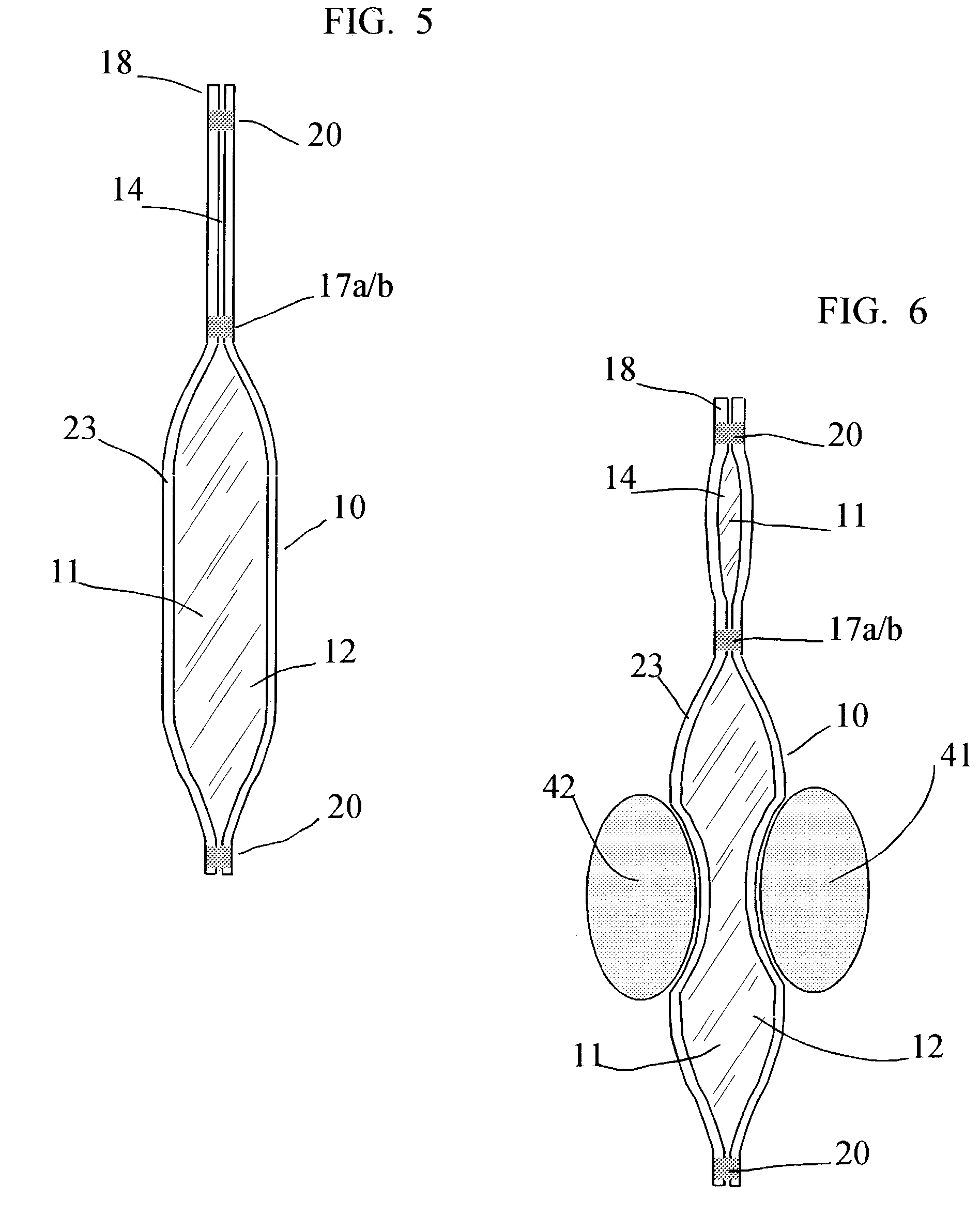Hand sanitizing packet and methods
a technology for hand sanitizing and packets, applied in the field of hand sanitizing packets and methods, can solve the problems of many organizations burdened with hand borne disease costs, lost 300 million person days of work and school, lost wages and medical expenses, etc., and achieve the effect of enhancing the opportunity of us
- Summary
- Abstract
- Description
- Claims
- Application Information
AI Technical Summary
Benefits of technology
Problems solved by technology
Method used
Image
Examples
example 1
Multi-dose Hand Sanitizing Fluid Packet
[0056]The preferred embodiment of the packet generally designated by the reference number 10 of FIGS. 1 and 2 has a peripheral seal 20 joining front and back walls 23 of flexible polymeric material (2-mil polypropylene) to enclose and contain a hand sanitizing fluid 11 (Purell Hand Sanitizer, 62% alcohol) with two chambers, a first chamber 12 and a second chamber 14. Overall dimensions in this packet embodiment are 9×3×0.5 centimeters with first chamber 6-centimeters long and second chamber 2.5-centimeters long and the balance of the length in sealed edges 20 and margins 18. Creating and dividing these adjacent chambers is a partitioning means in the form of a two-part barrier 17a and 17b created by sealing the front and back walls 23 in a like manner used to create the peripheral seal 20. Creation of the seals can be achieved by a number of means well known in the art, herein the common technique involving heat and pressure are used to create ...
example 2
Hand Sanitation Method
[0063]A disposable multi-dose packet of hand sanitizing fluid with self-sealing features that is unobtrusively carried in an easily accessible pocket would greatly contribute to the timely need to sanitize hands several times a day. Convenience of use and access are key features. For example, follow this narrative of a typical use that illustrates the promotion and subsequent attainment of effective hand sanitation. A father takes his daughter to a fast-food restaurant for lunch while out shopping. He places their order at the counter, pays, receives change, and their food tray. They find a booth and sit down. Before digging in, the father quickly retrieves from his shirt pocket a hand sanitizing fluid packet he had opened earlier in the morning after handling many items at a popular flea market. He offers the packet end to his daughter who reaches out and strips a dose of hand sanitizing fluid into her cupped hand and rubs. He does the same and drops the packe...
example 3
Lottery and Gaming Promotion Method
[0067]Habit formation is initially based on repetitive action and a key element in making that repetitive action possible is available circumstances. For example, the habit of using a fork to eat is not likely to develop if a fork is missing when food is served. The same is true in developing the habit of using hand sanitizing fluid packets to regularly sanitizing hands, the packets must be available at all times to form the habit of cleaning hands. Any and all techniques useful to distributing and having the user retain a hand sanitizing fluid packet is a major step toward developing a use habit simply because the packet is available in an opportune and timely manner.
[0068]One technique for promoting hand sanitation is to introduce lottery and gaining aspects so as to encourage the distribution and retention of hand sanitizing fluid packets. In the following scenario a lottery encourages and supports a significant health objective. A cruise ship's...
PUM
| Property | Measurement | Unit |
|---|---|---|
| volume | aaaaa | aaaaa |
| volume | aaaaa | aaaaa |
| length | aaaaa | aaaaa |
Abstract
Description
Claims
Application Information
 Login to View More
Login to View More - R&D
- Intellectual Property
- Life Sciences
- Materials
- Tech Scout
- Unparalleled Data Quality
- Higher Quality Content
- 60% Fewer Hallucinations
Browse by: Latest US Patents, China's latest patents, Technical Efficacy Thesaurus, Application Domain, Technology Topic, Popular Technical Reports.
© 2025 PatSnap. All rights reserved.Legal|Privacy policy|Modern Slavery Act Transparency Statement|Sitemap|About US| Contact US: help@patsnap.com



